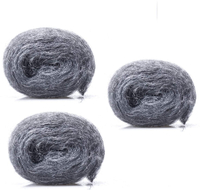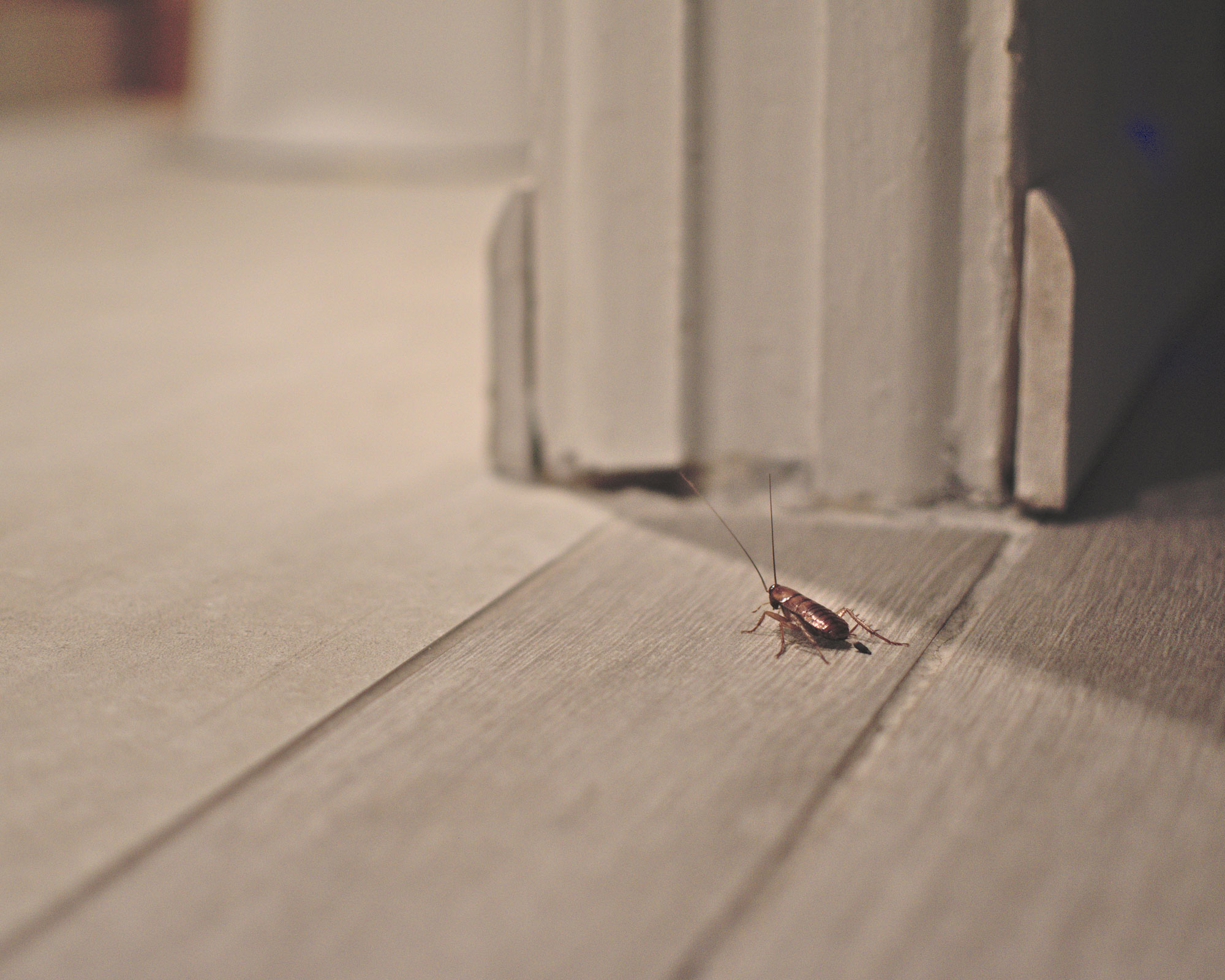

Need to learn how to get rid of roaches and fast? We've got your back so no need to fret.
Spotting a cockroach in your home can be a pretty horrifying discovery. These fast, creepy pests will make themselves right at home in your kitchen, bathroom, and living spaces and are notoriously difficult to rid yourself of.
Usually measuring about half an inch long, two of the most common of the 4600 species of cockroach worldwide are the Oriental and German cockroaches, which can be found around heating ducts and centrally located boiler rooms of apartment buildings. They might also like to set up a home around your appliances such as refrigerators or ovens.
Not sure this is the critter you're dealing with? Learn how to identify pests in your home.
They are sneaky little creeps who usually enter your home by hitching a ride in paper bags and cardboard boxes, or sneaking in through holes in pipes, vents, cracks and crevices. They're not picky eaters either – seeking out pretty much anything to munch, including starchy and sugary foods.
Paul Blackhurst, Head of Technical Academy at Rentokil Pest Control explains more, 'Cockroaches are closely associated with the human environment and have become pests worldwide. They are attracted to buildings where there is food, moisture, and in colder climates, warmth. They feed on a wide range of human foods and also organic materials such as cardboard, glue, feces, dead animals, and fellow cockroaches. They can pick up diseases from the filth in their surroundings and readily transmit them onto food and surfaces.'
On top of all that, roaches carry diseases, such as salmonella, staphylococcus, and streptococcus, so it's important to try to sort the problem fast. We look at how to get rid of cockroaches with tips on eliminating and preventing one of the toughest insects for good.
Spot the signs of cockroaches
An obvious sign of a cockroach infestation is to find a live one scuttling across the floor. However, roaches are nocturnal in nature so the chances of spotting one in daylight hours is slim. Their activity also increases in summer so our guide will help you keep pests out of your home this summer.
Here are other signs to look out for:
- Droppings: Around 2mm long, cockroaches will produce brown or black droppings when water isn't readily available.
- Shed skins: Cockroaches shed skins 5-8 times as they mature. You'll usually find their molting close to where they are sheltering.
- Pungent odor: Blackhurst describes more, '... a cockroach infestation will definitely provide you with a heavy scent that is distinguishable. The smell can be described as musty, sweet and sometimes like almond and this can taint food and surfaces they come in contact with.'
- Real Home top tip: Cockroaches look similar to beetles. Check our guide to how to get rid of carpet beetles to make sure you're dealing with the right unwanted visitor.
Where to look for cockroaches in your home
Blackhurst explains that 'identifying the location of a cockroach infestation can depend greatly on the species of cockroach that has invaded your property. Some prefer warm and humid areas, whilst other species can tolerate cooler conditions.'
Experts at The Home Depot add, 'Because they are most active at night, it's hard to see a roach infestation until it reaches a critical mass. They are very good at hiding and can gain access to very small spaces. A gap no more than 1/16th of an inch will accommodate even the largest American cockroach, whether trying to come in from the outside or just scuttle behind a sink into a wall crack.'
However here is a particular list of areas to keep an eye on.
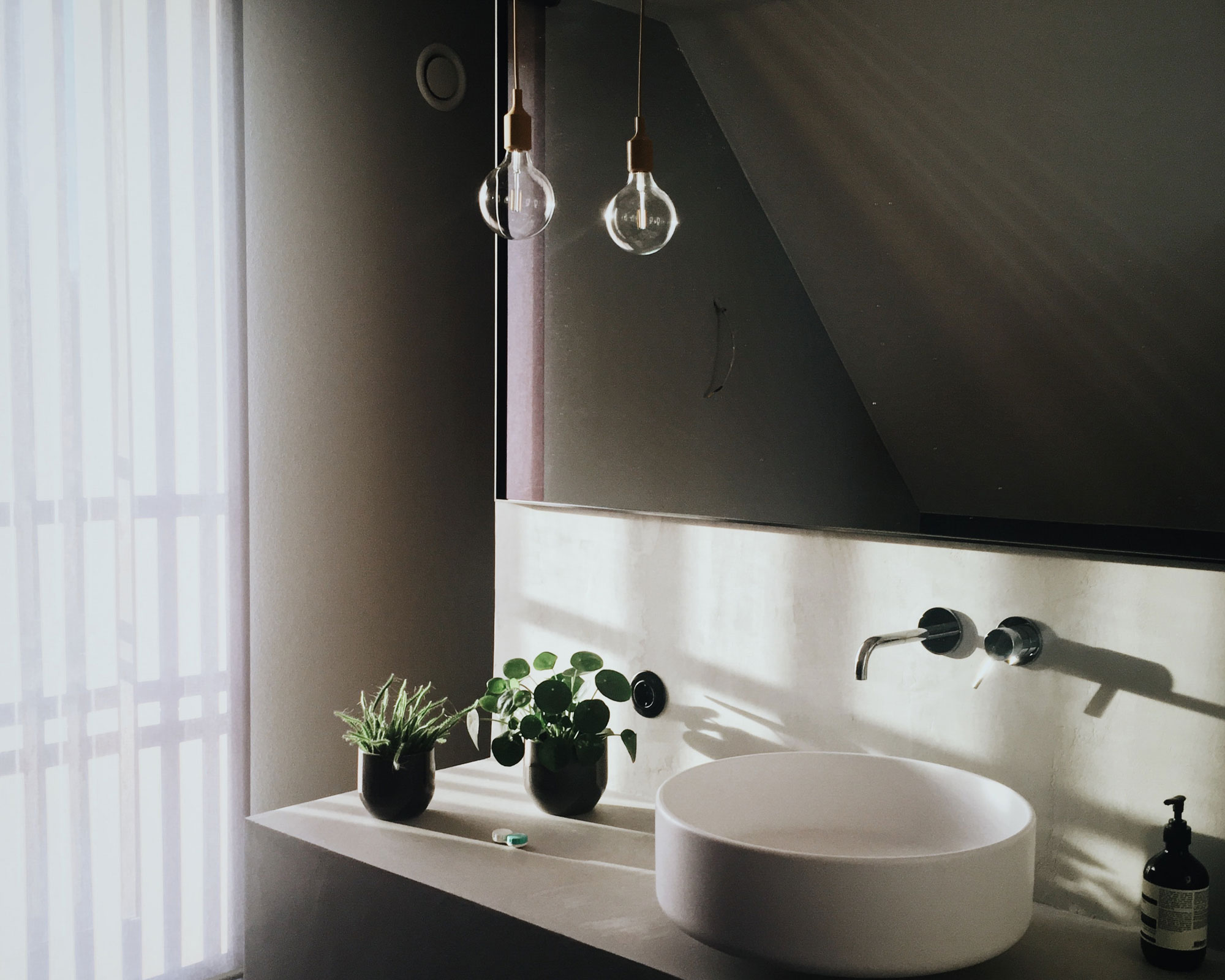
- In bathrooms: Cockroaches like to hang at the back of bathroom cabinets especially if they are full of yummy soap (yes they will eat soap residue too) and toiletry products that have been stored for a while. Inspect your plumbing behind your sink, bath and toilet, as they like to hide in dark spaces with access to water.
- In kitchens and laundry rooms: Look in cupboards and cabinets, paying particular attention to hidden areas with pipework such as under your sink and behind your dishwasher. Sometimes cockroaches can be found in the upper inside corner of cupboards, hanging upside down out of sight. Nooks and crannies at the backs of appliances like your cooker, washing machines, refrigerator and freezer and sometimes smaller kitchen appliances like microwaves, coffee makers, toasters and blenders could be prime locations for cockroaches.
- In basements and garages: Cockroaches will survive on eating cardboard and paper, so check boxes and piles of paper stored for long periods of time, paying particular attention to corner joints by baseboards.
- In drains: Check down pipes for cracks cockroaches might hide in, as well as broken drain covers they could scuttle through. Give pipe ducts and beneath porches or decking a once over too.
How to get rid of roaches
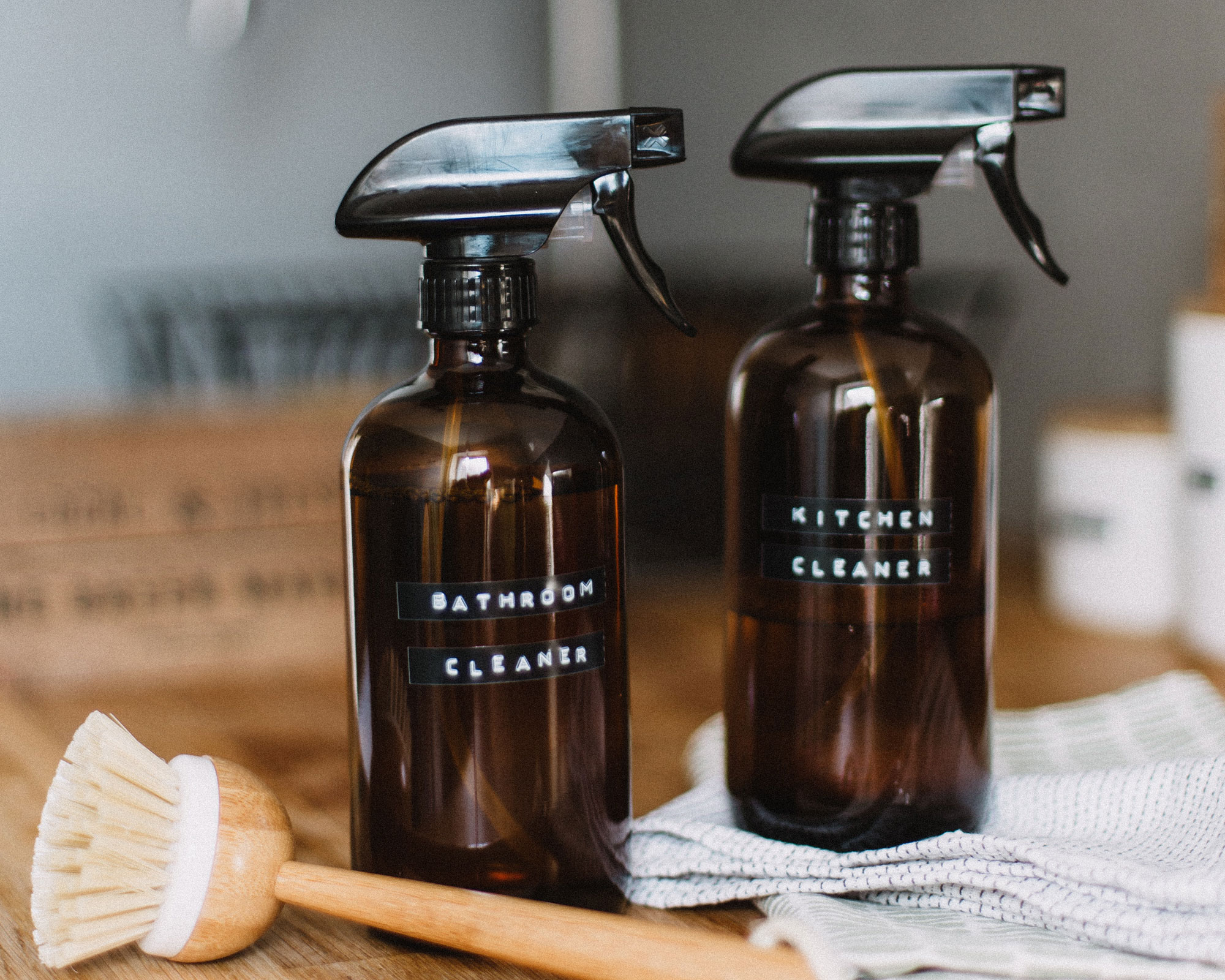
1. Deep clean your home
The best way to show these critters you mean business is by giving your home a thorough scrub.
Aside from all the usual household chores like vacuuming regularly, dusting and keeping your kitchen and bathroom clean (here's some pretty great best bathroom cleaning hacks to try), make sure you pay attention to the below:
- Wipe down all surfaces thoroughly to remove any food residue and sweep up crumbs and other food debris on your floors.
- Wash up dirty dishes and utensils in the sink as soon as possible.
- Keep your trash cans covered, clean, and emptied regularly.
- Clean hard-to-reach areas like the top of or beneath your refrigerator – cockroaches seek warmth and food there.
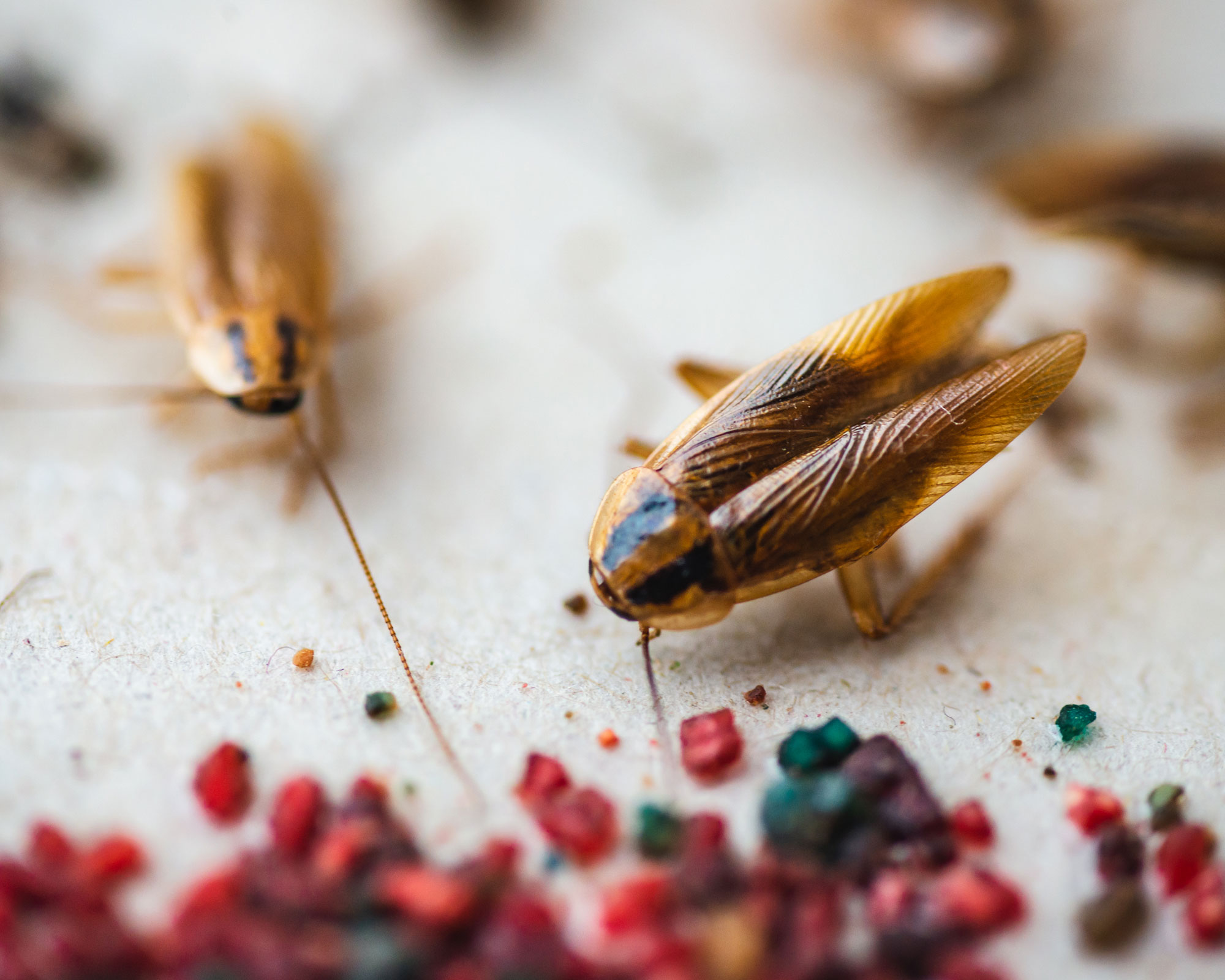
2. Buy cockroach traps
Shop-bought cockroach traps come in various forms but two of the most effective are glue strips, gel bait and bait stations. However, the British Pest Control Association explains more about DIY cockroach control:
'The success of insecticidal treatments depends on what insecticides are chosen, and how thorough the application is. Remember to pay particular attention to cracks and crevices where eggs and nymphs may be found.'
You can try glue strips to give you an idea of where suspected large infestations are based. Place the strips in areas where roaches are known to hang out (see above) Keep a close eye on those areas for a few days to a week. You can then find the high-traffic areas where glue strips have caught the most roaches, and these areas will need the most treatment.
Gel bait usually comes in a tube and can be applied under baseboards, in cracks and crevices, and hard to reach places. While gel bait can be effective in getting rid of roaches, the downside to it is you'll have dead roaches lying around your home.
Bait stations work by attracting roaches into stations to feed on poison. The poisoned roach then travels back to its home harbour, dies and is then eaten by the other roaches (ick), further passing on the poison.
Like all the methods above, bait stations work somewhat to get rid of roaches, but it's very difficult to tell if they've got rid of all the roaches in your home.
Warning: When using any insecticide, make sure it's kept well out of reach of children and pets.

3. Make homemade bait with boric acid
Boric acid powder is highly effective in cockroach management. It works by sticking to the cockroach's body and while it preens itself it digests the acid, succumbing to its demise. Insecticide versions of boric acid retain the potency as long as the powder remains dry, so there's no need to replacing.
The National Wildlife Federation recommends making a simple homemade bait by mixing equal parts of sugar and boric acid.
Scatter the mixture in ready-made bait stations, at crevices along the edges and corners of cabinets; the wall/floor joins behind your refrigerator, oven and dishwasher; and puffed into openings for plumbing under sinks.
4. Give diatomaceous earth a go
'As with other insects, diatomaceous earth (DE) works to kill roaches by lacerating their hard exoskeletons and dehydrating them. DE is best used in small, thin layers in hard-to-reach areas like between cabinets and at the backs of lower cabinets,' suggest experts at The Home Depot.
Safety tip: Do not apply DE to counters, open or drafty areas or anywhere food is prepared even if it is food grade. Apply in thin layers and wipe up any visible residue immediately.
5. Know when to call in the professionals
Cockroaches are stubborn and if there's an army of them in your home you'll quickly feel outnumbered. You've fought the good fight with baits and traps, but now it's time to call in the pros to make sure all the roaches are gone and for good.
The BCPA explains more, 'Cockroaches are hard-wired to survive. They are adaptable, highly mobile and their lifecycle makes cockroach control an uphill task for the untrained individual. BPCA would always recommend contacting a professional pest management company to help with your cockroach infestation.'
Good riddance.
How to prevent cockroaches
Now you've won the infestation battle, it's time to employ some basic preventative measures to make sure those cockroach creeps don't come back with a vengeance.
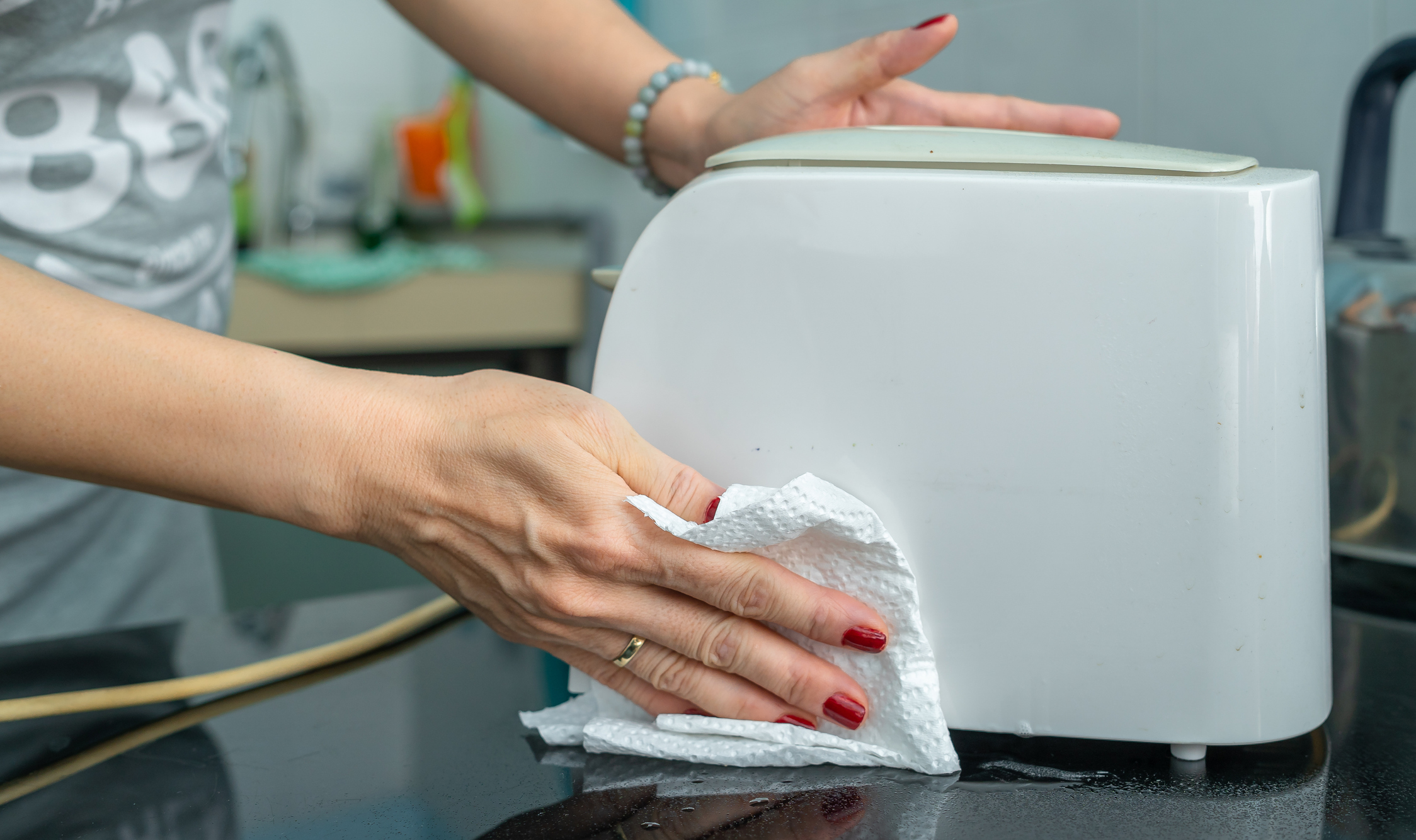
1. Keep your home clean and uncluttered
Like all pest prevention, the best way to deter a critter infestation is to keep your kitchen and storage areas clean and tidy.
Experts at The Home Depot say, 'Because roaches can be tenacious, more stringent cleaning regimens may be required to create an environment that will limit their access to food and stop supporting their habitation.'
Pay particular attention to the below:
- Clear kitchen surfaces of debris, crumbs and spillages which will reduce the likelihood of roaches coming in in in search of food. These kitchen cleaning hacks will keep things spick and span.
- Cover pet food, clean litter trays and water bowls in the evenings because these will be prime spots for a cockroach midnight feast.
- Vacuuming regularly will remove any yummy debris from furniture and floors. If you're looking for a new vacuum we've got the lowdown on the best vacuum cleaners around.
- Removing clutter like newspapers, magazines, packaging and cardboard will prevent droppings accumulating within one area.

2. Eliminate the cockroaches' food sources
Make it hard for cockroaches to find food in your home by following these tips:
- Removing liquids from sinks, bowls and buckets will discourage cockroaches from heading indoors.
- Discard leftover food from tables, worktops, counters and under appliances – even crumbs and small liquid spills.
- Use airtight containers for food storage to prevent them from detecting food sources as the smell of food attracts them to homes.
- When recycling, rinse out any residue from bottles and cans before placing in recycling bins because not washing your recycling of leftover food or liquid makes for a cockroach buffet.
- Empty your trash daily. Trash cans are big hits with cockroaches as they offer a range of nosh to consume. Why not opt for one of the best kitchen bins that'll help keep critters out.
3. Repair cracks and crevices
Building maintenance is an important step to deter cockroaches. Considering that they can creep through even the smallest of spaces, it's time to get repairing.
The Home Depot experts suggest, 'if there are any obvious cracks and crevices you cannot easily seal, spray them with roach spray and other home insect controls such as roach traps and more.'
Pay extra attention to these particular areas:
- Use caulk or wire wool to fill and seal cracks and holes in walls, around baseboards, under sinks, around pipework, fitted storage and behind plug sockets.
- Repair damaged pipes and clear blocked pipes where needed as cockroaches thrive in damp areas.
- Seal gaps around doors and windows to prevent entry.
Steel Wool Mice Fill Fabric DIY Repellents Kit, $13.99, Amazon
If you are looking to stop flying insects or larger pests from getting into your home, this wire wool kit should help fill up large crevices you suspect the pests are using as entry points.

4. Repel them with plants
While the usual insecticides contain a lot of harsh chemicals, it's worth exploring the natural route when it comes to repellents.
Mint, clove, tea tree, and lemon are all known to deter cockroaches, and creating an indoor herb garden is pretty easy. Once your infestation is under control, mix these essential oils with saltwater in a spray bottle and mist previously infested areas daily. If nothing else, your home will smell sensational.
Experts at The Home Depot also recommend trying a few other natural repellents: 'Several natural substances have been shown to be effective as roach repellents including osage orange oil, nepetalactone, which is present in catnip, and cineole, a compound found in bay leaves.'
5. Keep your home cool
Experts at The Home Depot explain, 'cockroaches prefer and are more active in warm environments. Keeping your home as cool as possible will make it less hospitable to roaches.'
How do you get rid of cockroaches overnight?
Paul Blackhurst, Technical Academy Head at Rentokil Pest Control explains, 'As with any pest infestation, prevention is always better than treatment. In order to be able to catch cockroaches early, it is crucial for building occupiers to be able to spot the signs of an infestation.'
'More often than not, identifying an unusual smell, droppings, smear marks and shed skins around the home is easier than being able to spot the actual cockroach.'
'For those looking to get rid of cockroaches quickly, we would always advise seeking professional help immediately, particularly when night-time inspections are necessary for revealing any hiding places in your property.'
Why do you have cockroaches in your clean apartment?
'Cockroaches don’t just appear in unclean homes. They often arrive in goods, furnishings or equipment, in search of shelter, food and water thus putting cleaner homes at potential risk of an infestation,' advises Blackhurst.
'If you are inspecting your home for these insects, make sure to check bathrooms and kitchens, right behind the back of cupboards, fridges and cabinets and warm crevices.'
'Also, pay close attention to laundry rooms, basements and garages, where cockroaches can skuttle through gaps undetected and feast on cardboard and newspapers. Even drains can make an ideal home for these insects, where certain species can thrive in cooler environments.'
Can you get rid of cockroaches on your own?
'Although DIY treatments are an option, they don’t always offer a long-term solution with cockroach eggs able to survive and hatch after one to two months.'
Blackhurst suggests that 'treating nesting and hiding areas is crucial for preventing reinfestation which is why we would always advise on using a professional pest controller.'
Join our newsletter
Get small space home decor ideas, celeb inspiration, DIY tips and more, straight to your inbox!

Jenny is Senior Digital Editor and joined the team in January 2021. She also works on the homes brands' video show, on the Future Homes Network, which is packed full of ideas to help you make the most of your own home and garden. Since getting on the property market with her first apartment and then more recently a house, her passion for interior design and gardening has taken on a new lease of life. Jenny's currently on the lookout for a doer-upper to put her stamp on. She loves collecting and salvaging unique items (much to her other half's despair) but sniffing out stylish home bargains is her one true love. When she has a spare minute, she loves to do a spot of crafting, having studied textiles at Uni – although she hardly gets the chance with a toddler who keeps her permanently on her toes.
-
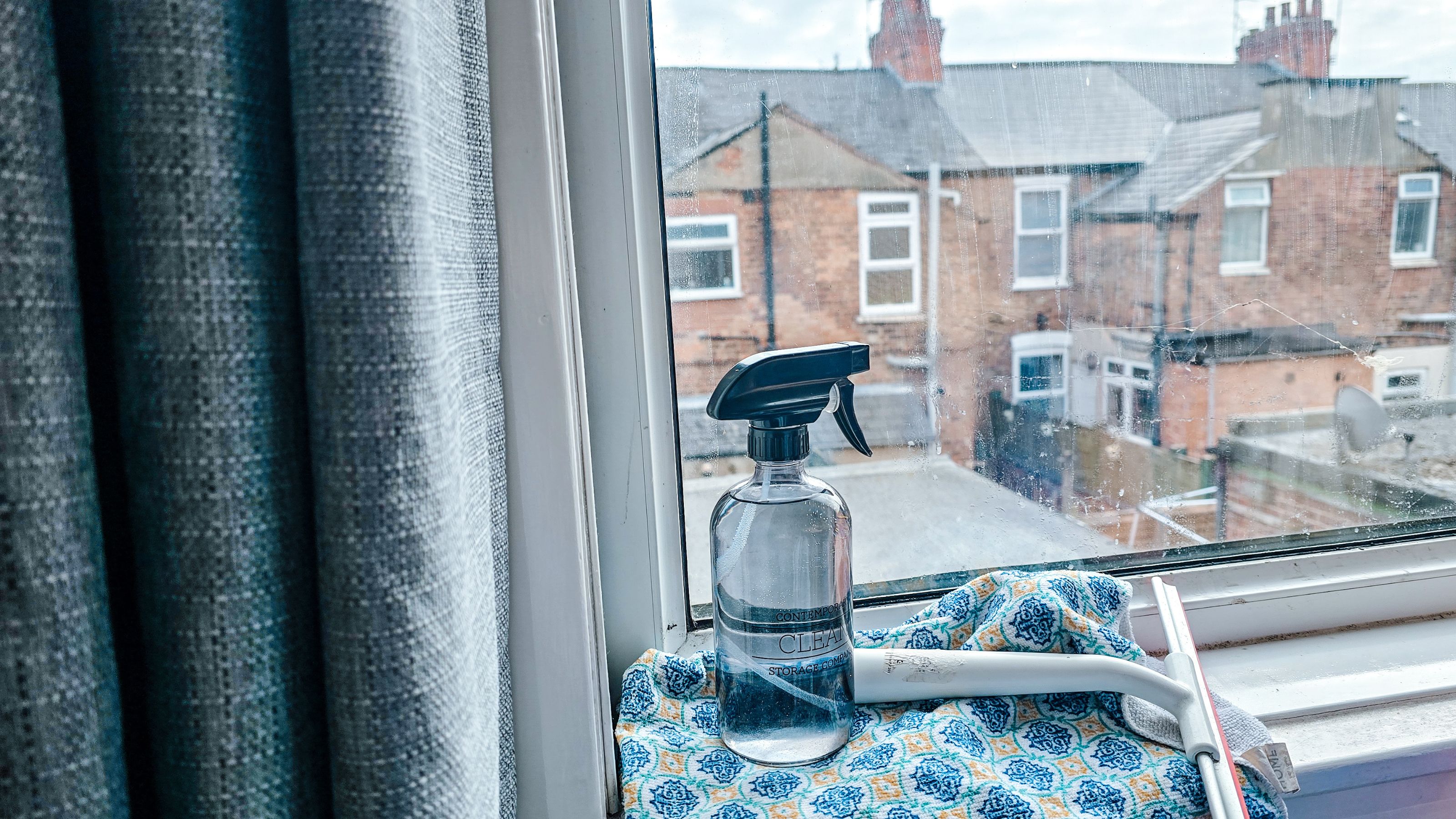 How to clean windows without streaks — 5 easy steps that cleaning pros always follow
How to clean windows without streaks — 5 easy steps that cleaning pros always followThis method on how to clean windows is favored by professional cleaners. We've asked them for the steps you should follow, plus picked cleaning buys
By Eve Smallman Last updated
-
 The latest Shark sale deals are perfect for pollen-proofing your home — with up to $150 off our favorite vacuums
The latest Shark sale deals are perfect for pollen-proofing your home — with up to $150 off our favorite vacuumsWe found the latest Shark sale deals on vacuums that are sure to be swooped up, especially as spring blooms trigger pollen allergies and we're in need of extra cleaning
By Danielle Valente Published
-
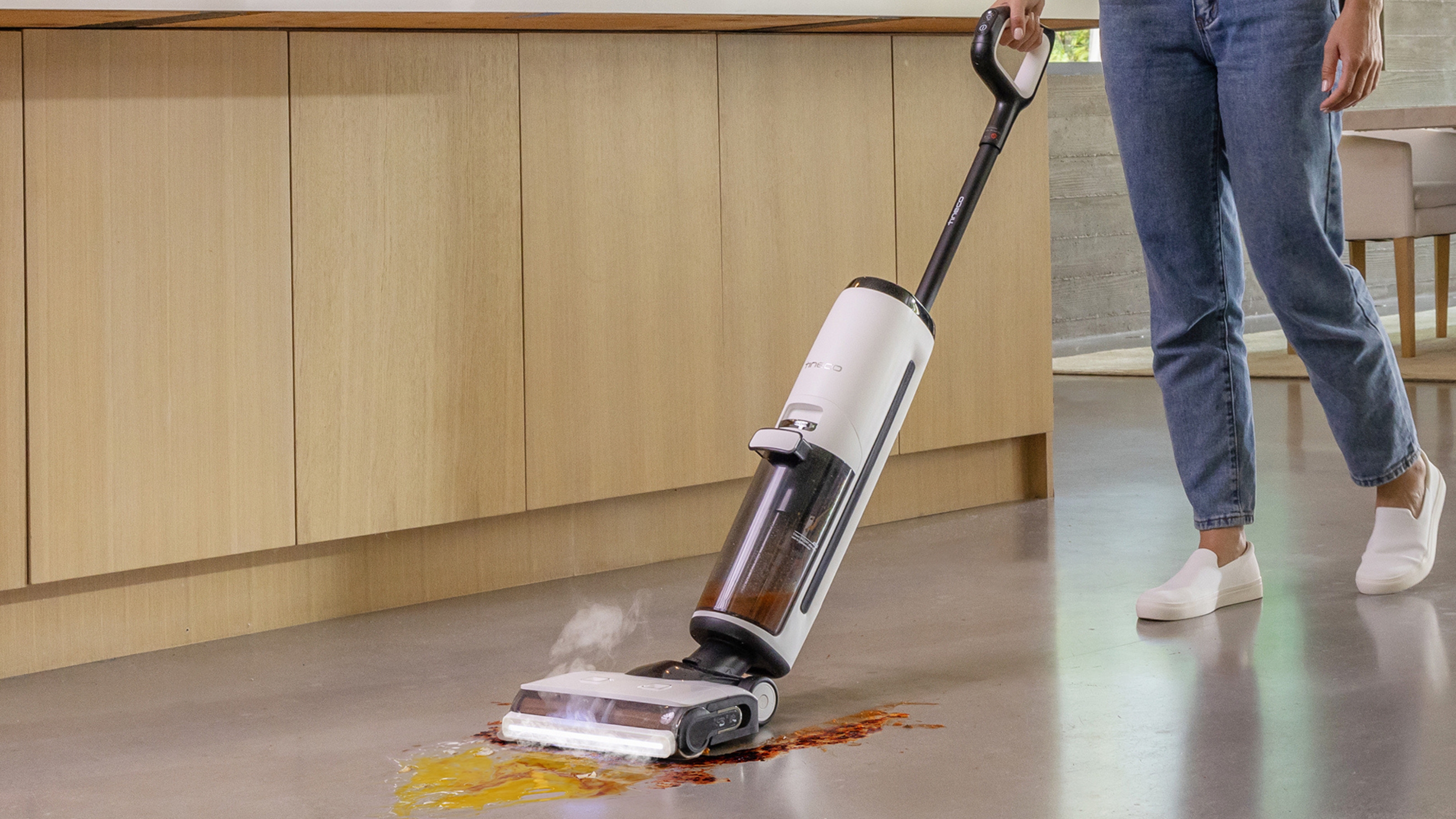
 Tineco Floor One S7 steam wet-dry vacuum review — spotless floors with minimal effort
Tineco Floor One S7 steam wet-dry vacuum review — spotless floors with minimal effortOur contributing editor, Camryn Rabideau, tests the Tineco Floor One S7 steam wet-dry vacuum in her New England homestead property
By Camryn Rabideau Published
-
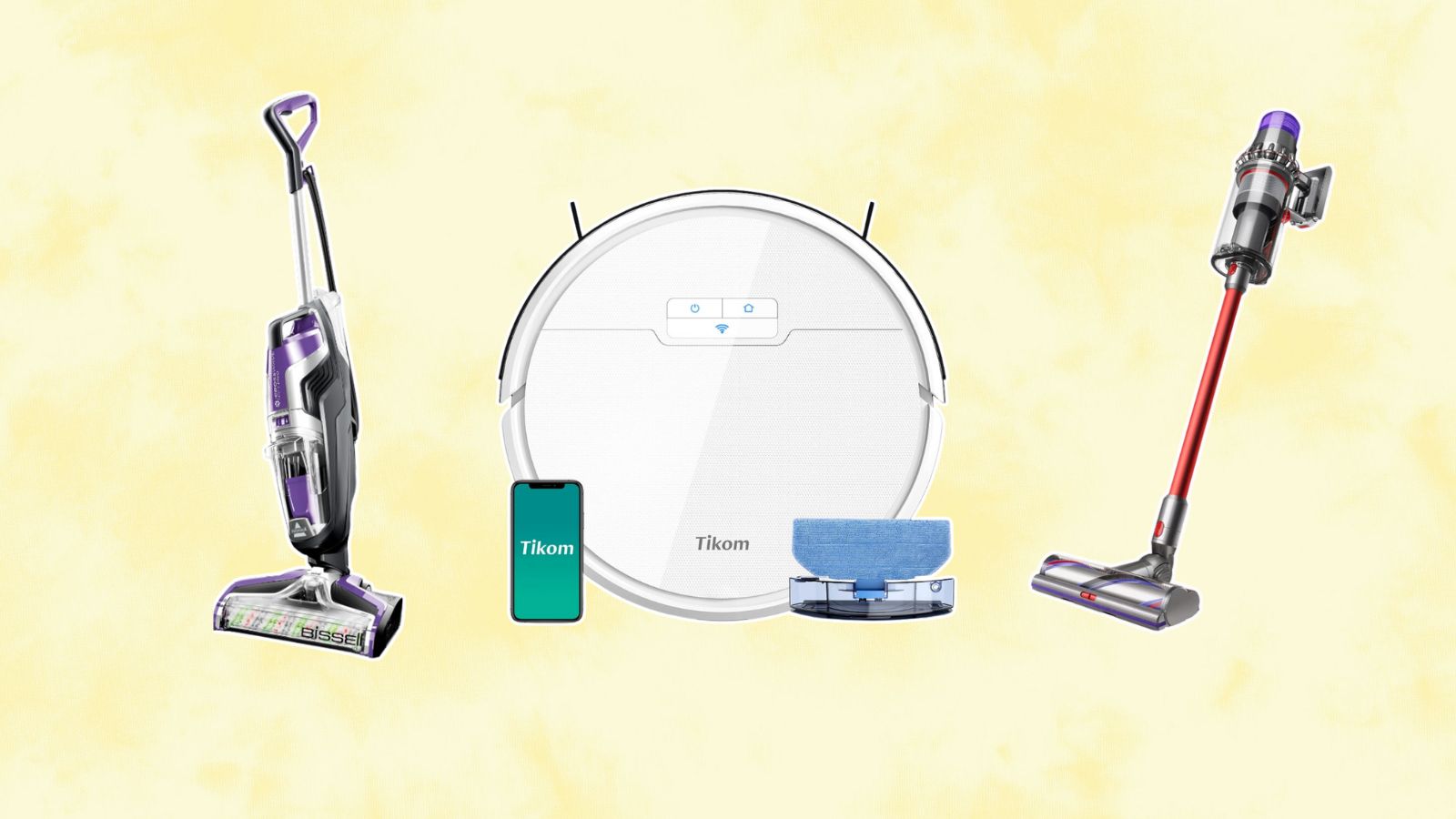 Amazon vacuum cleaners to nab during the retailer's Big Spring Sale — save up to 60% off our go-to small-space finds
Amazon vacuum cleaners to nab during the retailer's Big Spring Sale — save up to 60% off our go-to small-space findsChecking out the savings on Amazon? Vacuum cleaners are a must-buy during their first Big Spring Sale — here are our favorites up to 60% off
By Danielle Valente Published
-
 The Home Edit Walmart cleaning collection has just debuted with finds from $3
The Home Edit Walmart cleaning collection has just debuted with finds from $3Spring cleaning, anyone? The Home Edit Walmart cleaning collection has hit shelves with picks from $3
By Danielle Valente Published
-
 How to clean carpet on stairs — 3 simple steps to a spruced up staircase
How to clean carpet on stairs — 3 simple steps to a spruced up staircaseWant to know how to clean carpet on stairs? Our experts explain the simple steps to a sparkling stairway without too much elbow grease
By Andy van Terheyden Published
-
 The Home Depot backyard and patio cleaning supplies we're stocking up on before spring
The Home Depot backyard and patio cleaning supplies we're stocking up on before springDon't forget the outdoors when spring cleaning — The Home Depot backyard and patio cleaning buys from $11 will assist with tidying up
By Danielle Valente Published
-
 The Shark Detect Pro vacuum and other models are on sale for St Patrick's Day — perfect picks for your spring clean
The Shark Detect Pro vacuum and other models are on sale for St Patrick's Day — perfect picks for your spring cleanWhether you're eyeing the Shark Detect Pro Vacuum or Shark Pet Cordless Stick Vacuum, shop the St. Patty's Day sale for a discount on the best vacuums on shelves
By Danielle Valente Published
